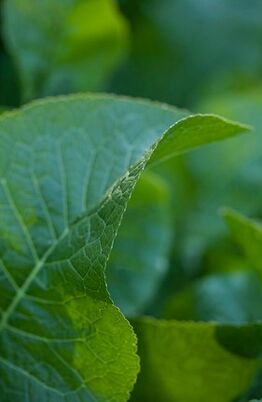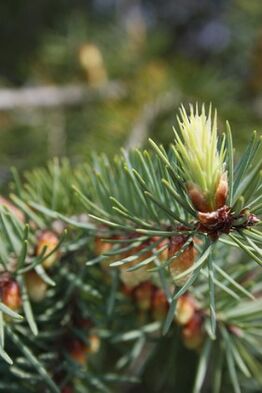
Most of mankind suffers from cervical osteochondrosis - this is a reward for a sedentary lifestyle and improper load on the back.
Cervical osteochondrosis is a degenerative-dystrophic lesion of the intervertebral disc of the cervical spine. Such a lesion gradually spreads to all elements of the disc, and over time the degenerative-dystrophic lesion reaches the adjacent vertebrae, intervertebral joints and the ligamentous apparatus.
Almost half of adults worldwide suffer from cervical osteochondrosis. Often in day-to-day life, neck pain and joint pain in general is referred to as "salt deposition, " but this is a fundamentally incorrect definition. That's what people have said and of course people understand this phrase literally. But in fact, salt does not get deposited in the joints (except for a disease such as gout - with it, salts of uric acid accumulate in the joints).
The treatment of osteochondrosis of the cervical spine does not pursue the objective of "resorption of salts, deposits" etc. With osteochondrosis there is "no salt deposits", but reactive ossification and, of course, no action can lead to "deposit resorption".
The degree and stage of development of the disease
Osteochondrosis of the cervical spine is a chronic disease with periods of exacerbation and remission. These periods have different lengths. Timely treatment of the disease is possible if it is the first degree of the disease and it is noticed at an early stage.
The degree of development of the disease
| Power | The well-being of the patient, the symptoms | Events |
|---|---|---|
| I graduate | Mild pain in the cervical spine, which may get worse when turning your head | Slight muscle tension in the neck |
| II degree | Pain of greater intensity with a return to the shoulder or arm, which intensifies with the turn of the head and with its flexion. In terms of well-being, there is a decrease in working capacity, weakness, headaches. |
Decreased intervertebral disc height and nerve root entrapment |
| III degree | Constant pain in the cervical spine with a return to the shoulder or arm. Sensations of numbness or weakness in the muscles of the arm. Weakness and dizziness of the patient's state of health | Restriction of mobility, pain when pressing on the neck joints. Development and formation of herniated intervertebral discs |
| Degree IV | Severe dizziness and tinnitus, impaired coordination due to compression of the vertebral artery that supplies the cerebellum and occipital lobe of the brain | The intervertebral disc is completely destroyed and has been replaced by connective tissue |
Stages of cervical osteochondrosis
| X-ray stage | Stage description |
|---|---|
| First stage | The cervical curvature is smoothed out, there are minor changes in the structure of the vertebrae |
| Second step | Instability is expressed between the vertebrae, there may be a displacement of one vertebra relative to another, a slight decrease in the height of the intervertebral disc |
| Third step | The height of the intervertebral disc is ¼ less than that of the other disc, which is higher. The intervertebral joints are modified. The appearance of bone growths. The intervertebral foramen and the spinal canal are narrowed. |
| Fourth step | The height of the intervertebral disc is significantly reduced. The intervertebral joints are severely damaged. The bone growths have become very prominent. The intervertebral foramen and the spinal canal are considerably narrowed. |
Causes of osteochondrosis of the cervical spine

Cervical osteochondrosis results from many factors. Let's list the main ones:
- The presence of scoliosis and poor posture.
- Overweight, obesity.
- Lead a sedentary lifestyle, sedentary lifestyle, sedentary work, low physical activity.
- History of spinal injuries.
- Metabolism disturbed.
- Large amounts of physical activity.
- Nervous shocks, tension and stress.
- Heredity.
- Constant back pain during various activities (for drivers, programmers, etc. )
The impact of these factors increases the load on the cervical spine, so that the compensation of the excessive load by the muscles of the neck leads to their spasm and impaired blood circulation in this area. As a result, it leads to degenerative changes in the cervical spine.
These factors lead to changes in the intervertebral discs of the cervical spine, as a result of which their structure changes, their nutrition is disturbed. The changes also affect the small joints between the vertebrae, the vertebral bodies are covered with bone growths.
The main symptoms of cervical osteochondrosis
- pain in the cervical spine. Pain may appear in the neck, back of the head, in the shoulder or in the arm;
- feeling of weakness in the hands;
- decreased sensitivity of the hand;
- restrictions on neck movements, a crunch when rotating and tilting the head appear with bone growth on the vertebral bodies, with a decrease in the height of the intervertebral disc, with damage to the small joints between theneck vertebrae;
- dizziness, weakness, lack of coordination occurs when the blood flow in the vertebral artery deteriorates, which leads to a deterioration in the blood supply to the cerebellum;
- numbness of the tongue, reduced vision and hearing occur in very severe cases of disturbances in the blood supply to the brain.
Treatment of cervical osteochondrosis at home
Conservative therapy
Conservative treatment of osteochondrosis of the cervical spine includes diet, the use of drugs, blockages, orthopedic, physiotherapeutic and thermal methods.
Treatment should include the following:
- ensure rest and unloading of the spine;
- fight against pain syndrome;
- combat muscle contracture and other reflex manifestations;
- fight against reactive changes in nervous elements and other soft tissues surrounding the spine.

Some of these treatments can be done at home.
- It is easy to follow the diet at home to ensure complete rest and relief for the cervical spine. The patient should lie on a firm bed, there should be a small soft pillow under the head, and a small warm sandbag or roller with a depression should be under the neck.
- Traction used by doctors for conservative treatment can not be done at home, but there is an alternative - a horizontal bar, on which you need to hang on, if possible, several times a day.
- Anesthetic blockade cannot be done at home, but the pain can be quickly relieved with other pain relievers - nonsteroidal anti-inflammatory drugs. Among them are effective, fast-acting ointments, as well as good anti-inflammatory drugs for oral administration. Thus, at home, it is possible to quickly relieve pain in the treatment of cervical osteochondrosis.
Warning! All medicines should only be taken in consultation with your doctor!
- For home treatment, group B vitamins should be taken. The vitamin does not have to be in the form of injections or tablets.

It is found in the following foods (foods highest in vitamin B are listed):
- Berries and fruits - with pineapple, dates, dried apricots, raisins, cranberries;
- Vegetables and Herbs - in potatoes, spinach, asparagus, leeks, parsley, green peas, garlic, horseradish;
- In all meat products vitamin B is contained in a fairly large dose, but beef and chicken by-products (kidneys, liver, heart, tongue) are especially useful;
- Seafood is also very rich in vitamin B. Among the fish, these are tuna, pink salmon and horse mackerel. It is especially abundant in sturgeon caviar and pollock eggs. Squid also contains a high percentage of vitamin B;
- A high content of vitamin B is found in the yolks of chicken eggs and quail eggs;
- Nuts and seeds also contain a lot of this vitamin - especially pine nuts and sunflower seeds, as well as pistachios, sesame seeds, and peanuts.
- Massage and exercise therapy can be used at home. A massage therapist can come to your home to give a therapeutic massage, or a loved one can learn basic cervical spine massage methods.
Traditional methods of treating cervical osteochondrosis at home

Horseradish leaf compress
Cervical osteochondrosis can be treated with horseradish leaves, as they have an anti-inflammatory effect on the neck joints when treating the disease at home.
The procedure is carried out in the form of applying a compress.
- It is necessary to take young and fresh horseradish leaves and put them in boiling water for a few seconds.
- After that, the leaves should be immediately applied to the cervical spine.
- In addition, you need to put cellophane on and cover the compress with a warm scarf or handkerchief.
- It is necessary to hold the compress from the leaves as much as possible, it is advisable to put it at night.
Due to the healing properties of the leaf compress, the neck will begin to move better, and the unpleasant illness will not so powerfully affect the well-being. Two large, cool sheets are enough to cover the neck and upper back.
Alcohol compress
The alcohol compress is also often used in the treatment of cervical osteochondrosis at home.
- You need to take 300 ml of medical alcohol, 10 ml of iodine, 10 tablets of crushed pain reliever (powder) and 10 ml of camphor alcohol.
- Mix all this well and use as a compress on the painful areas of the neck.
Potato and honey compress
- On a grater, grate 1 large raw potato and add 2 tablespoons of honey to the crushed mass.
- The resulting drug is spread on a tissue and applied to the cervical spine for two hours.
Pine bud tincture

Pine buds are used as a folk remedy in the treatment of the disease.
They should be harvested in early spring. Pine buds should not be larger than 2 cm and not less than 1. 5 cm.
- Harvested pine buds should be thoroughly rinsed.
- Grind the kidneys in a meat grinder and add sugar to it in a ratio of 2: 1, tsp. i. e. for two parts of the kidneys you need to take one part of sugar.
- Mix everything together and refrigerate for two weeks.
- After two weeks the product is ready. It should be taken a teaspoon three times a day for three weeks.
- You can store pine buds in the refrigerator for 1 year.
Herbal teas

In case of osteochondrosis of the cervical spine, it is recommended to drink various herbal teas for general strengthening of the body:
- with chamomile;
- with lingonberry and birch leaves;
- linden color;
- with calendula and St. John's wort;
- with rose hips;
- with motherwort and horsetail.
So, with the simultaneous use of folk remedies and drugs prescribed by a doctor, it is possible to accelerate the relief of symptoms of cervical osteochondrosis, reduce the period of exacerbation and lengthen the period of remission.






















